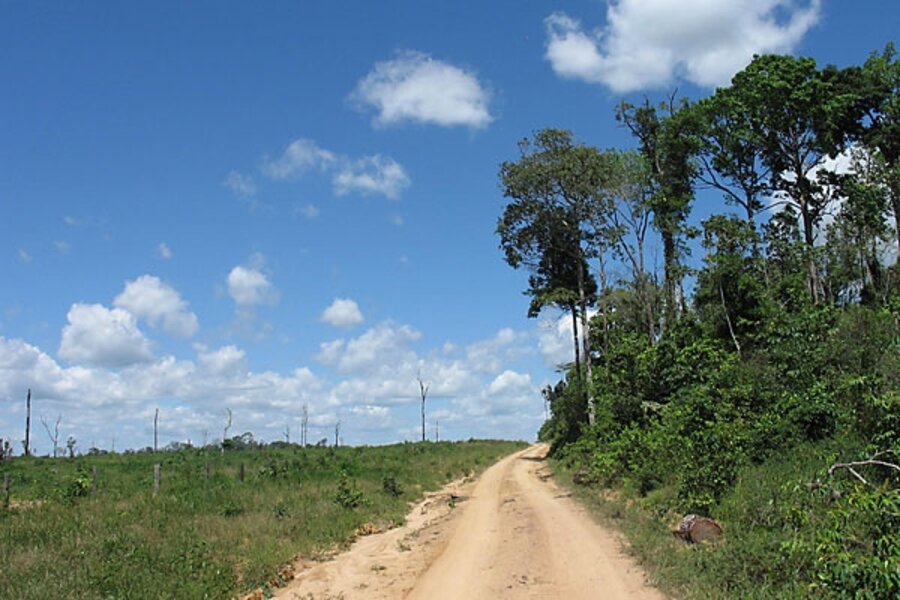A NAFTA for carbon trading?
Loading...
Scientists agree that our atmosphere is choking on carbon dioxide. Can the invisible hand of the market perform the Heimlich maneuver?
David Cleary thinks so. In a post on the Nature Conservancy's blog, the organization's director of conservation strategies in South America argues for a "Free Carbon-Trading Area of the Americas," which would allow US companies to gain credits for carbon offsets purchased in Latin America. Doing so, writes Mr. Cleary, would allow firms in the United States to finance worthy projects – say, protecting Amazon rain forests – and would help poor people in Latin America restore their natural environment.
Cleary proposes that a federal cap-and-trade system for greenhouse gases – such as the kind that President Obama has put forward as the centerpiece of his global warming policy – be extended to include the whole Western Hemisphere:
North of the border, there are thousands of companies positioning themselves for the cap-and-trade system they know is coming. South of the border, there are millions of hectares of threatened grasslands and tropical forests, and millions of people — farmers, indigenous peoples, communities of every kind — living in and around degraded ecosystems they’d love to be restoring. It shouldn’t be beyond the bounds of human ingenuity to put this particular two-and-two together and bolt a hemispheric dimension onto a U.S. cap-and-trade system for carbon emissions. [Emphasis in original]
Why not include a provision in the U.S. carbon trading system that allows U.S. companies to gain carbon credit for offsets in Latin America? After all, if the Amazon goes, the climate shifts will hit the United States almost as hard as Brazil, Peru and the other Amazonian countries. Things that drive climate — like atmospheric convection and surface temperatures — don’t exactly respect political frontiers.
Under Cleary's proposal, most of the revenue from a US cap-and-trade plan would go to US taxpayers. The White House estimates that cap-and-trade would raise $646 billion from 2012 to 2019, a prediction that some analysts say is actually on the low side.
A portion of this money – Cleary doesn't get into exactly how much – could be channeled to fund projects in Latin America, in particular ones that protect the region's tropical forests, which limit global warming by trapping carbon dioxide.
Cleary makes an appeal to laissez-faire economics – using rhetoric uncommon among environmentalists:
The whole history of free trade in the Americas is built on the idea that the free flow of goods and services is in everyone’s interest. It would be nice to see that assumption of interconnectedness reflected more in U.S. environmental policy, and the coming U.S. cap-and-trade system would be a great place to start. [emphasis in original]
Sending even a portion of that projected $646 billion in cap-and-trade revenue abroad could be a hard sell to an economically distressed American public. But businesses could latch on to the plan because it's almost always cheaper to fund a carbon offset project in the developing world than within US borders.





